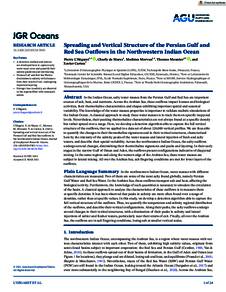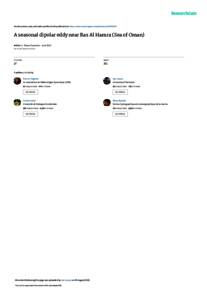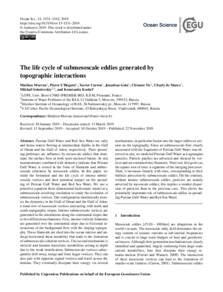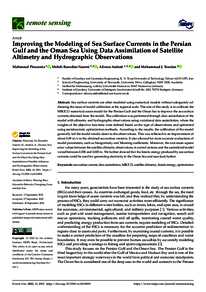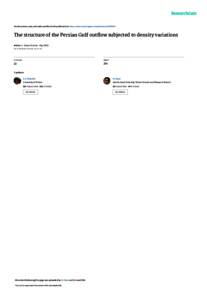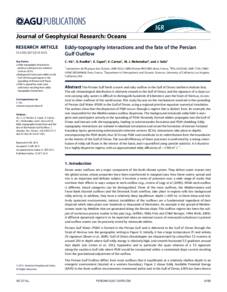Document
Spreading and Vertical structure of the Persian Gulf and Red Sea outflows in the Northwestern Indian Ocean.
Identifier
DOI: 10.1029/2019JC015983
Source
Journal of Geophysical Research: Oceans. v. 126, 4, e2019JC015983
Contributors
Country
United Kingdom.
City
Oxford
Publisher
Blackwell Publishing Ltd.
Gregorian
2021-04-01
Language
English
English abstract
In the Indian Ocean, salty water masses from the Persian Gulf and Red Sea are important sources of salt, heat, and nutrients. Across the Arabian Sea, these outflows impact human and biological activities, their thermohaline characteristics and shapes exhibiting important spatial and seasonal variability. The knowledge of the water masses properties is important to validate realistic simulations of the Indian Ocean. A classical approach to study these water masses is to track them on specific isopycnal levels. Nevertheless, their peaking thermohaline characteristics are not always found at a specific density but rather spread over a range. Here, we develop a detection algorithm able to capture the full vertical structure of the outflows, that we applied to a data set of about 126,000 vertical profiles. We are thus able to quantify the changes in their thermohaline signatures and in their vertical structures, characterized here by the intensity of the salinity peaks of the water masses and lateral injection of fresh and salty waters, and describe their spatial variability. Across the northwestern Indian Ocean, the salty outflows undergo several changes, diminishing their thermohaline signatures and peaks and layering. In their early stages in the narrow Gulf of Oman and Aden, the outflows present configurations indicative of diapycnal mixing. In the same regions and along the western edge of the Arabian Sea, these water masses are subject to lateral mixing. All over the Arabian Sea, salt fingering conditions are met for lower layers of the outflows.
ISSN
2169-9275
Category
Journal articles

